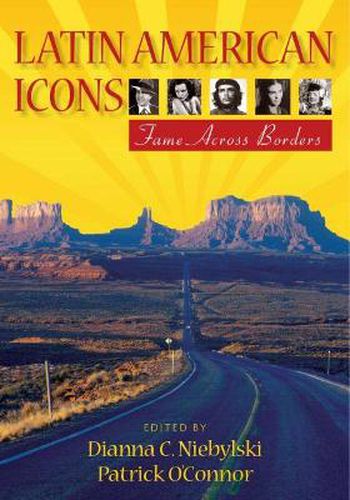Readings Newsletter
Become a Readings Member to make your shopping experience even easier.
Sign in or sign up for free!
You’re not far away from qualifying for FREE standard shipping within Australia
You’ve qualified for FREE standard shipping within Australia
The cart is loading…






The faces of Che, Frida, Evita, Carmen Miranda, and other icons represent Latin America both to a global public that sees these faces constantly reproduced, and to Latin Americans themselves. They enter the circulation machines of Hollywood, or work as nostalgic definitions of a nation, or define a post-national condition. They become stereotypes as they go global, and the often melodramatic stories that cling to them give them a different sort of power than the one they had in their original contexts.
Latin American Icons, from critics both in the United States and in Latin America, ask these faces questions; they describe the technologies and propaganda machines, whether the newspapers of Revolutionary Mexico (or Paris and New York) or the movie studios of Argentina and Mexico, which gave them power in their local context; and they return their original histories to those faces that have become abstract symbols of The Rebel or The Spitfire or The Tortured Artist.
In equal parts idolatry and iconoclasm, Latin American Icons recognises and interrogates those Latin Americans who have become larger than life. In trying to understand the meaning of iconic figures in modern Latin America, this volume ranges across every realm of political and cultural life - populist politicos, jet-setting ambassador-playboys, soccer players and superstars - to examine the complex play at work in the making and re-making of celebrities within and across national borders.
$9.00 standard shipping within Australia
FREE standard shipping within Australia for orders over $100.00
Express & International shipping calculated at checkout
The faces of Che, Frida, Evita, Carmen Miranda, and other icons represent Latin America both to a global public that sees these faces constantly reproduced, and to Latin Americans themselves. They enter the circulation machines of Hollywood, or work as nostalgic definitions of a nation, or define a post-national condition. They become stereotypes as they go global, and the often melodramatic stories that cling to them give them a different sort of power than the one they had in their original contexts.
Latin American Icons, from critics both in the United States and in Latin America, ask these faces questions; they describe the technologies and propaganda machines, whether the newspapers of Revolutionary Mexico (or Paris and New York) or the movie studios of Argentina and Mexico, which gave them power in their local context; and they return their original histories to those faces that have become abstract symbols of The Rebel or The Spitfire or The Tortured Artist.
In equal parts idolatry and iconoclasm, Latin American Icons recognises and interrogates those Latin Americans who have become larger than life. In trying to understand the meaning of iconic figures in modern Latin America, this volume ranges across every realm of political and cultural life - populist politicos, jet-setting ambassador-playboys, soccer players and superstars - to examine the complex play at work in the making and re-making of celebrities within and across national borders.